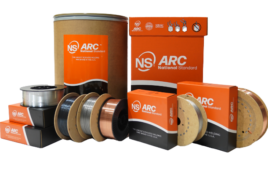By Dr. Jody Muelaner

Galling occurs when threads are damaged by material sticking and getting torn off.
Galling is a common type of damage that can occur in threads. When galling happens, it appears as though chunks of thread have been torn out and torn lumps of the removed material may be visible. It is caused by excessive friction or adhesion between mating threads.
Material can remained attached, as if it were partially sheared off, when the threads are unscrewed. So, one thread will have material removed while the mating thread may have some of this material stuck or welded to it.
Technically, galling is any transfer of material between metallic surfaces, resulting from friction when they slide past each other.
Microscopic galling occurs continuously in sliding contacts, including threads. During normal use, however, thread damage is only called galling when it results in visible damage — with large chunks of material torn out — and affects the function of the thread. This is rarely a gradual process and only occurs when a seized or over-tightened thread is unscrewed. As the seized thread breaks free, part of the thread shears off and remains attached to the mating surface.
The resulting lump increases the local friction and, typically, causes further damage as the thread continues to be unscrewed.
If the galling is severe enough, this may cause the thread to lockup and the fastener to break. Metals, such as aluminum and mild steel, are more prone to galling. It is less common in hardened steel fasteners. The propensity to galling is a result of ductility and metallic-bonding. Some softer metals, such as bronze, are very resistant to galling.
Galling can be avoided through correct maintenance, such as lubricating threads. Galling is not limited to threads and can occur whenever there is excessive pressure, friction, or adhesion between mating surfaces. It is commonly seen between metal surfaces. It may, therefore, cause damage in sliding contacts, shafts or gears.





Tell Us What You Think!